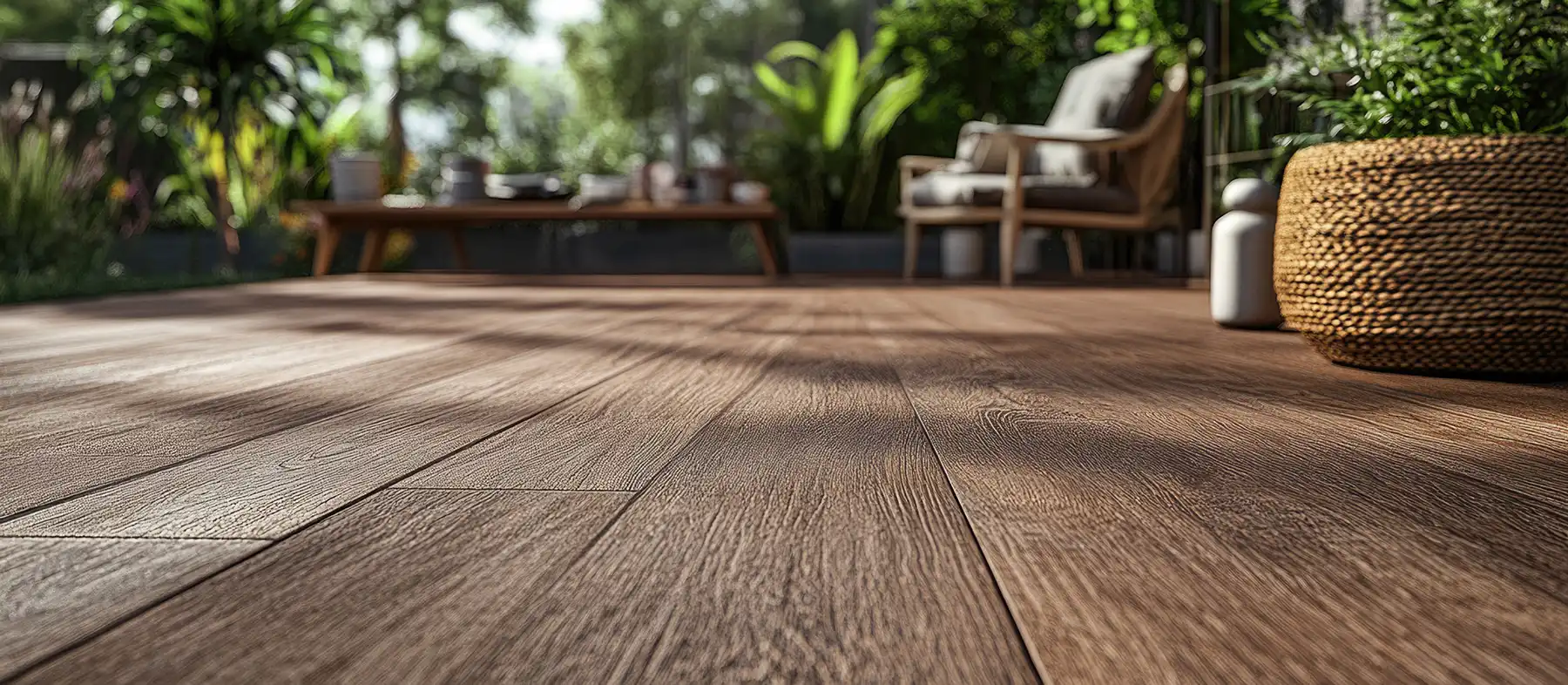Looking to build your own backyard oasis? Now’s the time to get started! While you may think of spring as the best time for growth, if you’re looking to plant trees, the best time of year is actually the fall.
The cooler temperatures and increased rainfall that come with fall make it a great time to plant trees. The softer soil not only enables easier planting for you but also gives the roots a great chance to settle before the ground becomes hard in the winter.
Ready to put your green thumb to work? We’re here to help you get started.

Vegetation Loss
Four years after the derecho, Iowa is still picking up the pieces. Our beautiful landscape looks different than it did before—some structures have been rebuilt, but the loss of foliage has changed our view.
According to a report from the Iowa Department of Natural Resources (DNR), the state lost an estimated 7.2 million trees when the derecho viciously swept across the state. Wind speeds in Cedar Rapids were among the highest wind speeds ever recorded during a derecho, clocking in at about 140 mph. It was those winds that ripped through 669,000 mature trees in the city, resulting in the loss of nearly 70% of its urban canopy. Iowa City and Johnson County reported an estimated 1,738 acres of canopy were damaged, equaling over 234,000 trees damaged. That’s a whole lot of re-planting to restore our natural landscape!

Benefits of Trees As a Homeowner
We know you know that trees are great for the environment, but did you know just how much they can affect your home and quality of life? Just check out a few of the ways planting trees can improve your life:
- Boosted curb appeal – This one affects both you and your neighborhood! Did you know that by adding trees to your yard you can boost the resale value of your home between 3-15%?
- Lower utility bills – Large, leafy trees that provide shade in the summer months are a great way to cool your home.
- Slow water runoff and reduce flooding – The roots of trees can help slow the flow of rainwater by absorbing some of it, in turn, it also helps reduce erosion.
- Improve air quality – An Iowa DNR report assessing urban tree canopy damage as a result of the 2020 derecho stated that the loss of trees is estimated to have resulted in over 335 tons of avoided emissions and $7,713,722 dollars in air pollution removal.
- Boost your health – Exposure to trees can help strengthen your immune system, reduce blood pressure, and boost your mood thanks to the higher concentration of oxygen and phytoncides they produce.
- Provide privacy – Goodbye, eyesore fences! Trees are a natural and beautiful way to increase your home’s privacy.

What’s Thriving In the Area?
Before you start planting, it’s good to take a look around at what’s thriving in the area.
The mighty oak stands strong in Iowa—so much so that the “oak” was even designated Iowa’s official state tree in 1961 by the Iowa General Assembly. Rumor has it that the oldest oak tree in Johnson County is right here in Iowa City (even predating the state designation of the state tree). The tree, located in Westcott Heights, is estimated to be about 150 years old. When the neighborhood was developed, they even paved around the tree instead of cutting it down.
If you’re looking for a great place to discover a variety of thriving tree and plant species, look no further than your backyard. The University of Iowa campus grounds earned their arboretum accreditation in 2021 by ArbNet, a professional network of arboreta and tree professionals. The campus holds a Level II accreditation, meaning it has “at least 100 species of woody plants, employs paid staff, and has enhanced public education programs and a documented collections policy.” UI’s campus arboretum is composed of over 8,000 trees made up of 330 (and counting) species.
The University has also earned and maintained a Tree Campus USA designation every year since 2009. This designation means that the program’s Five Core Standards have been met, all geared towards promoting healthy trees and student involvement.
Ready to explore? Use the University of Iowa interactive Tree Inventory Map. Look for the campus’s seven current or former State Champion trees that include: a Literary Grove featuring trees with connections to famous authors; a Ginkgo collection with over 75 cultivars by Hancher Auditorium; an orchard featuring rare and historic fruit trees near the Hawkeye Tennis and Recreation Complex; two American Conifer Society Reference Gardens near Halsey Hall and the Eckstein Medical Research Building; a quercetum with over 60 species of Oaks on the UI Research Campus; and finally, a rare Anne Frank Horse Chestnut sapling from the original chestnut tree that symbolized hope for Anne Frank (the 13th sapling in the U.S. to be grown from the original tree outside of the home Anne Frank and her family hid in WWII).

Biodiversity Creates Balance
Variety is essential. You eat different foods to meet your needs, take your kids to different activities to stay excited, and switch up workout routines to work different parts of your body. Simply put, variety is crucial to a healthy lifestyle. The same is true for the environment.
Biodiversity is key to keeping a balanced habitat. This is why replanting isn’t quite as easy as it sounds. As we look to restore our canopy loss, biodiversity needs to be strongly considered with each step. A wide array of foliage with different abilities to withstand natural elements reduces the likelihood of a single natural event or infestation taking out a large number of trees, helping ensure a healthy canopy for years to come.
This is also why, while it may be tempting, it’s also a good idea to steer clear of the most important tree species in your area. Take ash trees. According to the Iowa Department of Natural Resources, several species of ash trees band together to make up about 17% of the average Iowa community’s street canopy. Ash trees across Iowa are under attack due to the infestation of the Emerald Ash Borer, a non-native, wood-boring beetle. In 2016, the University of Iowa campus discovered a larva of the bug on an ash tree in Gibson Square Park—the discovery was the first in Johnson County. To date, roughly 700 ash trees have been removed on the campus to eliminate as well as prevent continued infestation. As of April 2024, the beetle has been confirmed in all but one of Iowa’s counties.

Emerald Ash Borers, EAB, are most damaging as larvae, where they feed on the inner bark of ash trees, completely disrupting the flow of water and nutrients and eventually causing canopy thinning and branch dieback. This leads infested ash trees to die within 2-4 years. According to the Iowa Department of Agriculture and Land Stewardship, ash trees within 15 miles of a known EAB infestation are considered at high risk. Unfortunately, the majority of the state is currently within close proximity to an infestation. Landowners with ash trees are recommended to start insecticide treatment for at-risk trees to protect healthy ones as well as remove any declining trees and replace them with other species.
Choosing What to Plant
Before you start planting this fall, it’s important to understand your area. Whether you’re helping choose trees to build your community forest or adding to your personal property, check out these resources to help you build a healthy and resilient mix based on your backyard:

First, find your zone! The USDA Plant Hardiness Zone Map is “the standard by which gardeners and growers can determine which perennial plants are most likely to thrive at a location based on the average extreme minimum winter temperature. With winter minimum temperatures averaging between -15 and -10 degrees Fahrenheit, Johnson County is in USDA Plant Hardiness Zone 5.
The Arbor Day Foundation is a great resource for finding the best trees in your zone. Add your zip code, then sort through lists of Fast-Growing, Flowering, Fruit & Nut, Evergreen, Shade, Shrubs & Bushes, or House & Patio trees and plants. Plus, even better, once you have your top picks, the Arbor Day Foundation can even ship them straight to you.
The Iowa Department of Natural Resources (DNR) is another great place to look for direction on hardy trees for the area. With resources and links for tree selection, planting, and maintenance—you’re sure to find everything you need. Check out their guide Rethinking Maple – Selecting Trees For Your Yard to dive deeper into the importance of species diversity.
Iowa City offers a Right Tree, Right Location guide which aims to help community members consider the right place for certain types of trees, including ornamental trees, large shade trees, columnar trees, and coniferous trees.
Things to Keep in Mind
While you’ll likely be planting trees or shrubs as saplings, do your research on the size and shape of your choice as a full-grown adult—you should be planning spatially for that size. This will ensure you don’t end up will full-size trees too close to your home, resulting in constant maintenance or eventual damage.
Even if you’re planting on your property, there may be some guidelines and ordinances you have to follow. If you have any questions or concerns about what or where you’re planting, check in with your township.
Always remember that utility lines have the right of way. Avoid planting tall growing trees (above 15+ feet) within 20 feet of utility lines. If you’re looking to plant near the lines and have a question, reach out to your local power company.

Iowa City’s Root for Trees Discount Program
As a crucial part of the City’s Climate Action Plan, Iowa City is now working to expand its tree coverage and diversity through the Root for Trees Discount Program. Launched on August 1, 2024, the program offers 50% Off the purchase of a tree at participating Iowa City locations. To receive the discount, participants will fill out a voucher application, which will be accepted now through May 1, 2025.
Whether you have a green thumb or not, there are plenty of tree options to help you spruce up your yard. As a homeowner, making the investment in your home is an investment into your future. Keep in mind that the trees you plant today may even outlive your grandchildren—so it’s important to choose your species and the space you’ll put it in properly.
If you’re a buyer, be sure to talk to your REALTOR® about your prospective home’s lot. They’ll be able to help point out any potential issues and whether or not you would have to pay for expensive trimmings or tree removal.
Likewise, as a seller, your REALTOR® may have good ideas about tree and plant placement that will increase your home’s value. After all, they’re the ones who can identify the latest home trends!





